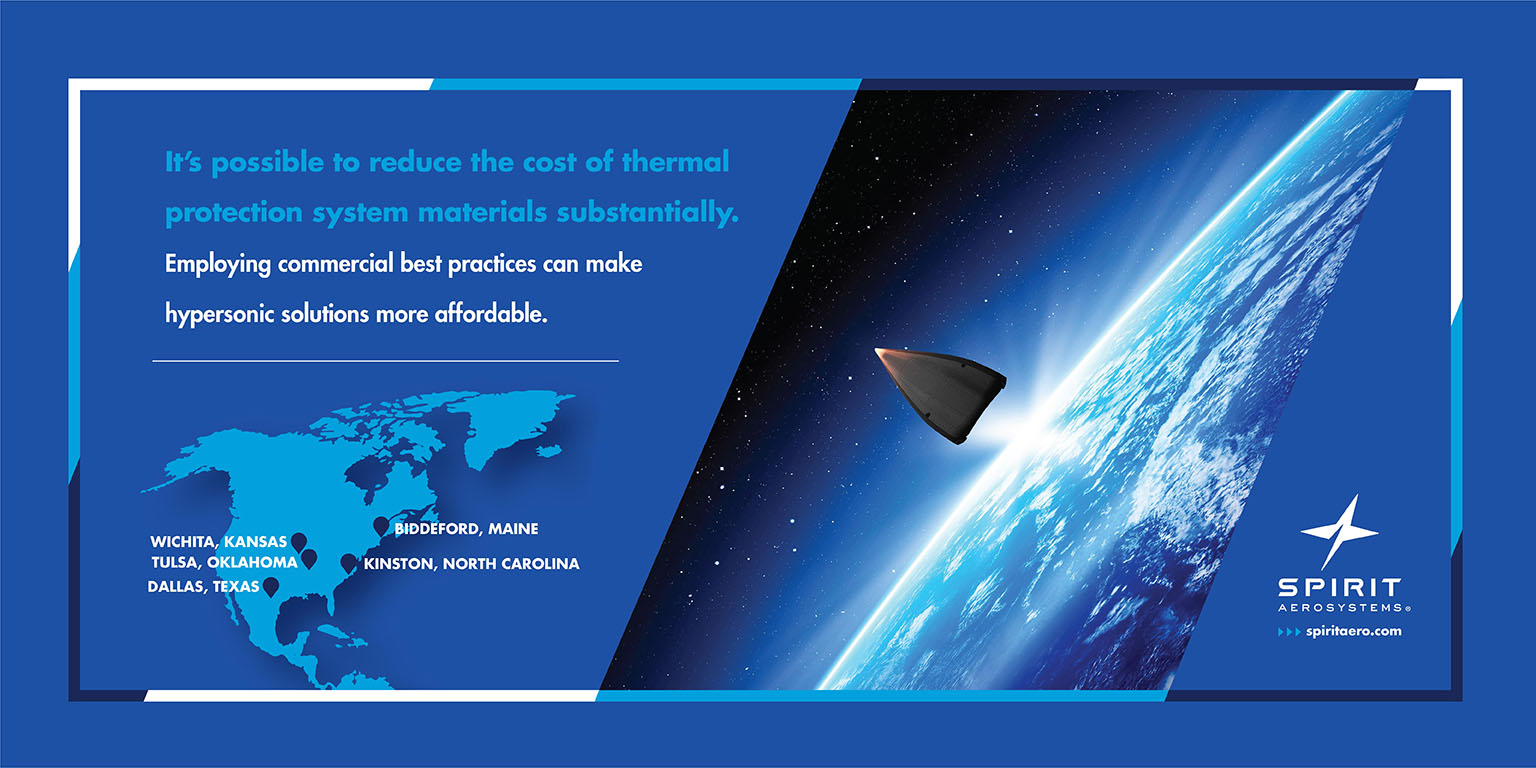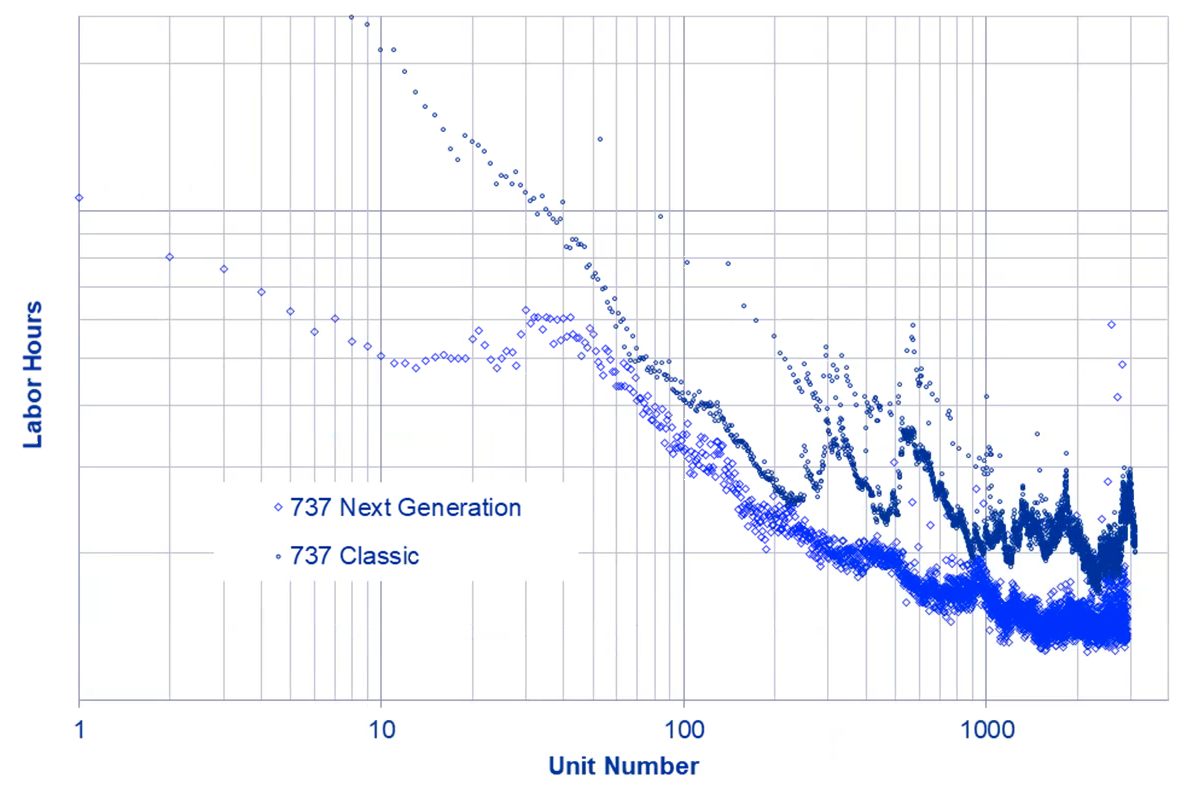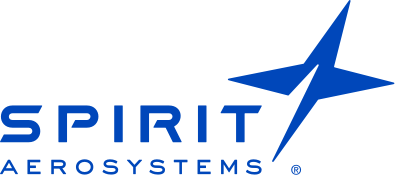

The U.S. Government Holds the Key to Affordable Hypersonic Weaponry
By Mark Forkapa, Director of Marketing and Business Development

The development and deployment of hypersonic weapon systems is one of the Department of Defense’s (DoD) top strategic priorities. Having an industrial base poised to deliver such weapons at-scale will be critical to system delivery. There is significant untapped potential available to the DoD to manage programmatic risks and accelerate the industry’s ability to deliver affordability and production capabilities at-scale.
One of the key enabling technologies of hypersonic flight is the Thermal Protection System (TPS). It is also a significant cost contributor and represents a significant opportunity for the DoD and defense industry to unlock efficiencies and drive down costs.
The hypersonic industry has learned a lot in the past 40 years about how to evolve TPS designs and applications, with recent insights coming from the successful test launch of the common-hypersonic glide body (C-HGB) in March 2020. Although the C-HGB is not yet in volume production, it is one of the most advanced U.S. projects and provides the chance to continuously prove out best practices in industrializing hypersonic vehicles.
Opportunities to scale and industrialize Thermal Protection Systems for hypersonic programs
As the C-HGB and other hypersonic programs continue to advance from science and technology programs into operational capabilities, there are three significant opportunities for the DoD to unlock the sustainable cost savings and enable accelerated industrialization. They are:
- Enabling commercial best practices
- Investing in highly adaptable and flexible capabilities
- Harnessing industrialization expertise and volume production experience
With the DoD’s support, as production volumes grow, the defense industry will be able to more effectively deploy best practices to reduce program risk and meet performance requirements for TPS through the entire product lifecycle.
Enable commercial best practices to achieve scale and affordability of hypersonics
Thanks to the last nine decades of experience within the nation’s commercial aviation industry, a lot is known about how to drive outcomes the DoD requires. The first opportunity in industrializing future hypersonic weapon systems is to enable and apply commercial aviation best practices.
For TPS materials, that means addressing and improving significant cost-drivers. Since the TPS materials and designs were developed as part of Science and Technology (S&T) programs at universities, considerations such as designing for manufacturability and supply chain optimization were not the focus. Manufacturing TPS systems to support programs (to date) has also only required in a very low volume and often custom builds. By addressing these opportunities, the costs of current 3D carbon-carbon (C/C) TPS materials can be reduced substantially. This is particularly true when optimization is combined with scaled production volumes, even at annual build rates of hundreds of ship sets—all without changing the material specifications or changing the component design.
What limits progress is the requirement that industry must inherit legacy practices abandoned on newer programs. Materials first specified years ago on programs like Advanced Hypersonic Weapon and now used on C-HGB have not yet taken advantage of known process optimization techniques. Reducing the complexity of the supply chain by leveraging vertical integration will also allow the industry to optimize manufacturing processes for component affordability.
While industrializing hypersonic TPS systems affordably at-scale has yet to be seen, continuous cost improvement should be prioritized as within commercial aviation, particularly considering the long product lifecycles. Additional commercial best practices that can unleash significant benefits to the affordable deployment of hypersonic weapon systems include leveraging efficiencies of scale, determinant assembly, automation, and employing other world-class supply chain processes.
The means by which the DoD and defense industry can leverage commercial best practices is to build opportunities in program plans that enable incremental design and process revisions across the weapon system’s lifecycle. The commercial aviation industry has proven that design and cost improvements can be made over the life of a program while simultaneously mitigating risk. The below illustration shows how commercial best practices drive labor hour reductions to produce commercial aircraft. The same should be expected for industrializing hypersonic TPS systems.

Invest in industrial base capabilities that are highly flexible and adaptable
Within the current industrial base for TPS systems, the industry has access to high TRL and MRL processes that have been demonstrated in volume production. Some of these capabilities have also proven to be highly adaptable and able to deliver highly customized material solutions that are optimized for the application while utilizing the same robust process and equipment that serves many different programs and missions. This is not the case for all high-temperature TPS material solutions. Some processes and capabilities are very specific to the type of TPS component, whether it is a hand lay-up for a composite leading edge or a large acreage component leveraging processes with significant levels of variability. While there may be certain circumstances and applications these materials work best, they limit industry’s ability to meet and exceed the DoD’s requirements.
As hypersonic programs continue to evolve and begin to transition to operational weapons systems for our warfighter, it makes sense to build an industrial base that provides the most flexible and adaptable capabilities to enable future evolution of the designs and material solutions. Due to the extreme engineering required, design teams need as much flexibility as possible to adapt to the demand, while controlling risks and without sacrificing cost or manufacturing readiness.
Key elements to consider in determining how flexible the industrial base capabilities are for TPS systems include density range, component size range, the ability to densify a wide range of fiber architectures, both carbon and SiC, and the ability to process both carbon and ceramic matrices.
Harness industrialization expertise and volume production experience
As the DoD agencies and defense industry seek to accelerate hypersonic program timelines to scale and deploy capabilities, look to partner with suppliers with the expertise and experience to manage risk and deliver program success. Suppliers with industrialization expertise and experience building TPS materials for production volume programs have established best practices, program management expertise, established quality systems, contracting and financial systems, as well as the necessary engineering and innovation capabilities required to execute from concept to full production scale.
Utilizing an integrated product team will enable the DoD and defense industry to take full advantage of a partnership approach consisting of all stakeholders (including customers and suppliers) to optimize the design and build of hypersonic programs. This approach, using iterative design, is a critical best practice that we believe will accelerate learning curves, reduce flow times and improve quality. Applying this approach to hypersonic weapon design and manufacturing not only increases the program’s MRL, it also decreases the program’s risk – resulting in a system that’s ready to meet the required build rates.
The DoD holds the keys in deploying strategic hypersonic capabilities into the field for operability to meet the rapidly evolving needs of the nation. As one of the enabling technologies of hypersonic flight, the Thermal Protection System is an area of focus to build the industrial base. It enables scaled production and is also one of the key areas to drive affordability. By leveraging commercial best practices, investing in the most adaptable and flexible capabilities, and by harnessing industrialization expertise, the nation’s goals of fielding strategic hypersonic capabilities affordably and within accelerated program timelines is achievable.
To learn more, contact us or visit our website.
Cautionary Statement Regarding Forward-Looking Statements
This article contains "forward-looking statements" that may involve many risks and uncertainties. Forward-looking statements generally can be identified by the use of forward-looking terminology such as "aim," "anticipate," "believe," "could," "continue," "estimate," "expect," "goal," "forecast," "intend," "may," "might," "objective," "outlook," "plan," "predict," "project," "should," "target," "will," "would," and other similar words, or phrases, or the negative thereof, unless the context requires otherwise. These statements reflect management's current views with respect to future events and are subject to risks and uncertainties, both known and unknown. Our actual results may vary materially from those anticipated in forward-looking statements. We caution investors not to place undue reliance on any forward-looking statements. Important factors that could cause actual results to differ materially from those reflected in such forward-looking statements and that should be considered in evaluating our outlook include, without limitation, the impact of the COVID-19 pandemic on our business and operations; the timing and conditions surrounding the full worldwide return to service (including receiving the remaining regulatory approvals) of the B737 MAX, future demand for the aircraft, and any residual impacts of the B737 MAX grounding on production rates for the aircraft; our reliance on Boeing for a significant portion of our revenues; our ability to execute our growth strategy, including our ability to complete and integrate acquisitions; our ability to accurately estimate and manage performance, cost, and revenue under our contracts; demand for our products and services and the effect of economic or geopolitical conditions in the industries and markets in which we operate in the U.S. and globally; our ability to manage our liquidity, borrow additional funds or refinance debt; and other factors disclosed in our filings with the Securities and Exchange Commission. These factors are not exhaustive and it is not possible for us to predict all factors that could cause actual results to differ materially from those reflected in our forward-looking statements. These factors speak only as of the date hereof, and new factors may emerge or changes to the foregoing factors may occur that could impact our business. Except to the extent required by law, we undertake no obligation to, and expressly disclaim any obligation to, publicly update or revise any forward-looking statements, whether as a result of new information, future events, or otherwise.



